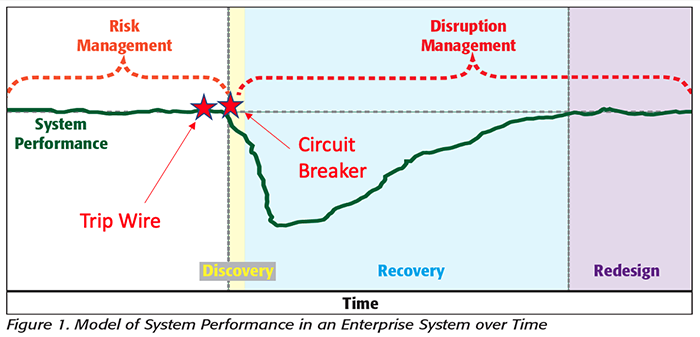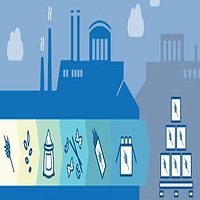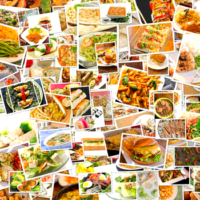Lessons observed by food companies during the pandemic are not the same as lessons learned where firms took decisive action to protect their interests and those of their business customers or consumers. This raises the question: Is there a way to build more resilience into our food ecosystems without repeating the same mistakes over and over again? The answer is a resounding yes. But first, we need to focus on a systems-led approach versus a technology-led discussion.
In the systems engineering world, interconnected complexity relates to the multitudes of complex systems and subsystems, both internally and externally—often termed as ecosystems of ecosystems. For example, a food production business is connected to numerous ecosystems internally and externally with their suppliers, business partners, and customers. Like power grid, telco and internet service providers, banking and insurance, logistics and technology providers, and local and federal governments, ecosystems have varying levels of dependency. Therefore, cascading consequences of a failure of any member in an ecosystems (e.g., outage, failure or a hack attack) can be catastrophic for any other member or business.
Cascading Consequences of Systems Failures
When a seemingly small disruption or innocuous ripple occurs in an enterprise-level system, the impacts and unintended consequences may be felt far and wide, much like a tiny snowball rolling down a mountain that results in a catastrophic avalanche. Simple actions or decisions of individuals, departments, or organizations, like the snowball, can potentially have complex, unintended, and potentially catastrophic outcomes with far-reaching implications—an out of control avalanche within and beyond the enterprise ecosystem.
Systems Thinking: A Missing Skill Set?
To enhance food supply chain resilience, we must reimagine how to address the pandemic’s challenges. We need to utilize systems thinking to visualize the current interconnected ecosystems landscape and the evolving complexities and risks. In food systems, we must consider the unique requirements of the food supply subsystems (e.g., livestock and plants) in their entirety, to prepare and plan for the impact of policy interventions in sustainability, food security, and supply chain digitalization, and meet the need for socioeconomic growth. It is vital to look through a systems lens to understand how our future food chains should interoperate and how risk should be managed. This must include lessons learned during the pandemic and our collective experiences in leveraging technologies and innovation to build supply chain resilience.
What’s Holding Us Back from Planning the Future Food Chains?
Many organizations have internal silos we politely refer to as “cylinders of excellence,” with minimal or ineffectual communications across divisions or subsidiaries who may be dependent on their decisions or output. Systems thinking is required to facilitate preparation and planning to test resiliency within the broad context of interconnected ecosystems. Testing resilience in peacetime will result in less pain during a crisis. Using the snowball metaphor, without an effective “avalanche detection system,” organizations are at high risk of numerous complex challenges; all because timely, actionable information is not being passed up and downstream within and across organizations. Also, because they have not considered the potential cascading consequences of interconnected system failures.
Digitalization and Systems Thinking
 Systems thinking helps organizations visualize their ecosystem landscape and undertake informed risk and gap analyses and simulations to enhance their enterprise resilience. Note that this is NOT just a technology discussion. For example, a blockchain is a ledger of transactions. It takes a rear-view mirror perspective of organizational events: “What has happened?” Alone, blockchain is not an “avalanche detection system,” but it can be a foundational layer. Implementing distributed ledger technology requires organizations to assess and address business issues of trust domains (human and machine), data quality and data governance. With a strong, business requirements-driven foundation in place, an effectively deployed Internet of Things (IoT) applications layer can then provide real-time visibility into food supply chain events. Additional layers such as smart-contracts specific to business transactions (e.g., receiving of goods in a cold chain) could enable auto acceptance and trigger payment if pre-set conditions are satisfied (e.g., in-transit temperature conditions were met). Moreover, when advanced analytics (e.g., artificial intelligence) utilizes trusted, verified, and clean event data residing within a blockchain repository, augmented with real-time IoT data (e.g., sensors) and relevant external data identified from a systems approach (e.g., weather, drought conditions) one can immediately visualize a food systems “avalanche detection system,” capable of real-time alerts for risks (e.g., risk of food fraud or adulteration). A systems view encompasses a rear-view perspective with a clear view of the road ahead, a well-defined map and the use of sensors and technologies to identify potential obstacles or risks up ahead. Furthermore, data-driven, technology-enabled detection/early warning systems enable the setting of ‘tripwires’ for advanced notification to assess the likelihood of an adverse event occurring. This will require multi-stakeholder inputs, collaboration within and across organizations, between functional executives, business process owners, systems engineers, data scientists, and other pertinent roles. In Figure 1, we build on MacDonald and Corsi by visualizing the advanced warning systems or tripwires and circuit breakers. The latter suggests a tool or mechanism change course.
Systems thinking helps organizations visualize their ecosystem landscape and undertake informed risk and gap analyses and simulations to enhance their enterprise resilience. Note that this is NOT just a technology discussion. For example, a blockchain is a ledger of transactions. It takes a rear-view mirror perspective of organizational events: “What has happened?” Alone, blockchain is not an “avalanche detection system,” but it can be a foundational layer. Implementing distributed ledger technology requires organizations to assess and address business issues of trust domains (human and machine), data quality and data governance. With a strong, business requirements-driven foundation in place, an effectively deployed Internet of Things (IoT) applications layer can then provide real-time visibility into food supply chain events. Additional layers such as smart-contracts specific to business transactions (e.g., receiving of goods in a cold chain) could enable auto acceptance and trigger payment if pre-set conditions are satisfied (e.g., in-transit temperature conditions were met). Moreover, when advanced analytics (e.g., artificial intelligence) utilizes trusted, verified, and clean event data residing within a blockchain repository, augmented with real-time IoT data (e.g., sensors) and relevant external data identified from a systems approach (e.g., weather, drought conditions) one can immediately visualize a food systems “avalanche detection system,” capable of real-time alerts for risks (e.g., risk of food fraud or adulteration). A systems view encompasses a rear-view perspective with a clear view of the road ahead, a well-defined map and the use of sensors and technologies to identify potential obstacles or risks up ahead. Furthermore, data-driven, technology-enabled detection/early warning systems enable the setting of ‘tripwires’ for advanced notification to assess the likelihood of an adverse event occurring. This will require multi-stakeholder inputs, collaboration within and across organizations, between functional executives, business process owners, systems engineers, data scientists, and other pertinent roles. In Figure 1, we build on MacDonald and Corsi by visualizing the advanced warning systems or tripwires and circuit breakers. The latter suggests a tool or mechanism change course.
The only constant is technological change requiring organizations to continually adapt to new ideas, innovations, and methodologies. There is no doubt that many, if not most organizations, have brilliant people, technologies, and they just work fine—for a peacetime situation. Unfortunately, we are living in a crisis. We must react accordingly—a strategic, holistic, agile systems view with integrated early detection (tripwires) and rapid response capability (circuit breaker) is critical for success as we move forward into the unknown.
John G. Keogh, M.B.A., M.Sc., is a strategist, adviser, and management science researcher with 30 years of executive leadership roles as director, vice president, and senior vice president in global supply chain management, information technology, technology consulting, and supply chain standards. Currently, he is managing principal at Toronto-based niche advisory and research firm Shantalla Inc. He holds a postgraduate diploma in management, an M.B.A. in management, and a master’s of science degree in business and management research in transparency and trust in the food chain.
Carl J. Unis, M.Eng., is a systems engineer with expertise in continuity of operations, continuity of government, devolution, infrastructure, supply chain logistics, and emergency management. He has a master’s degree in systems engineering from Stevens Institute of Technology. C.J. was formerly the critical infrastructure protection program manager for the New Mexico Department of Homeland Security and Emergency Management.
Karen J. Hand, Ph.D., is the leader of the Canadian Digital Agri-Food initiative, where she has invested many years as a visionary consultant and researcher in the application of data science as applied to the Canadian Agri-Food Industry. Her current focus concerns digital transformation strategies in agri-food and farmer driven data architecture for trustworthy data sharing and enablement of digital identities and Verifiable Credentials, beginning with the farm.
Systems Thinking Helps Build Resilience in Post-COVID Food Supply Chains



